Search
Summary 
Loading AI-generated summary based on World History Encyclopedia articles ...
Search Results
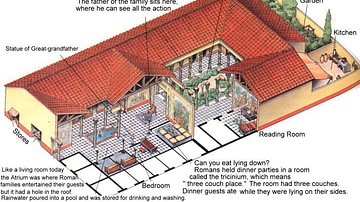
Article
The Roman Domus
The Roman domus was much more than a place of dwelling for a Roman familia. It also served as a place of business and a religious center for worship. The size of a domus could range from a very small house to a luxurious mansion. In some...
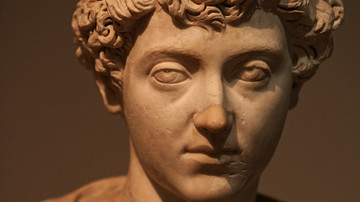
Article
A Roman Boy's Rite of Passage
A Roman boy's rite of passage, a ceremony or ritual marking a transitional period in life from childhood to adulthood, was the assuming of the toga virilis, the adult toga. The ceremony usually took place sometime between the boy's 14th and...

Article
A Visitor's Guide to Pompeii
Visitors to Naples and its surrounding area could be overwhelmed by the number of archaeological wonders to see. Buried for centuries beneath tons of volcanic ash and debris, the archaeological sites scattered along the coast of Naples are...
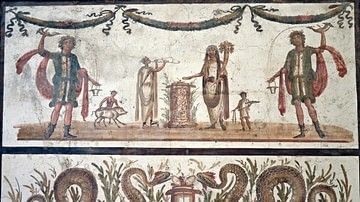
Image
Pompeii Fresco with Lares
Fresco depicting two Lares (protective deities, sons of the god Mercury) pouring wine from a drinking horn (rhyton) into a bucket (situla). They stand on either side of a scene of sacrifice. The head of the family makes offerings, a musician...

Article
Roman Household Spirits: Manes, Panes and Lares
To the ancient Romans, everything was imbued with a divine spirit (numen, plural: numina) which gave it life. Even supposedly inanimate objects like rocks and trees possessed a numen, a belief which no doubt grew out of the early religious...
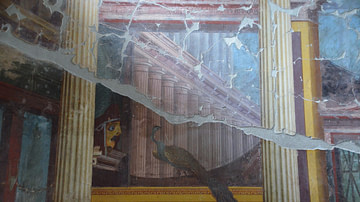
Article
A Visitor's Guide to Oplontis, Stabiae & Boscoreale
More than 2,000 years ago, extremely wealthy Romans lived on the sunny shores of the Bay of Naples at Pompeii and in opulent villas nearby, unconcerned about Mount Vesuvius in the distance. Julius Caesar (100-44 BCE), Augustus (r. 27 BCE...
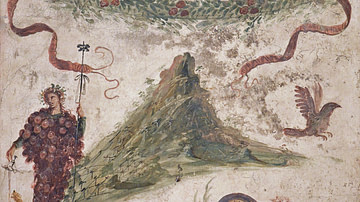
Image
Bacchus & Mount Vesuvius Fresco
Wall painting depicting Bacchus wearing a bunch of grapes with a panther at his feet and most probably Mount Vesuvius. The serpent is Agathodaemon, the "good spirit" of vineyards and grain fields. From the Lararium of the House of the Centenary...
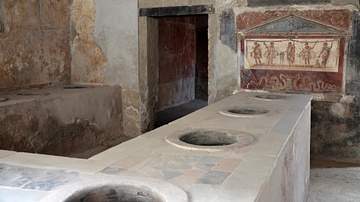
Image
The Thermopolium of Vetutius Placidus in Pompeii
The thermopolium (cook-shop) of Vetutius Placidus in Pompeii. Thermapolia were bars which served hot food and drinks. The 'L' shaped masonry counter has large storage jars which were used to hold food. On the rear wall of the bar is a painted...
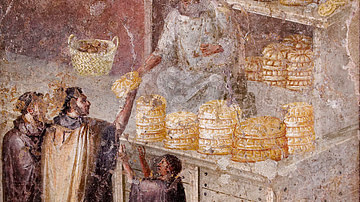
Quiz
Daily Life in Ancient Rome
Daily life ancient Rome villa insula domus atrium compluvium cubiculum culina impluvium lararium peristylium posticum tablinum taberna triclinium vestibulum paterfamilias materfamilias Circus Maximus factions amphitheater Colosseum baths...
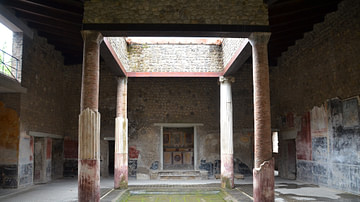
Image
Atrium of Villa San Marco in Stabiae
View of the four-colonnaded atrium of the Villa San Marco in Stabiae, Italy (1st century BCE). The tetrastyle atrium was entered through a small colonnaded and frescoed portico furnished with masonry seats for waiting visitors. Looking across...